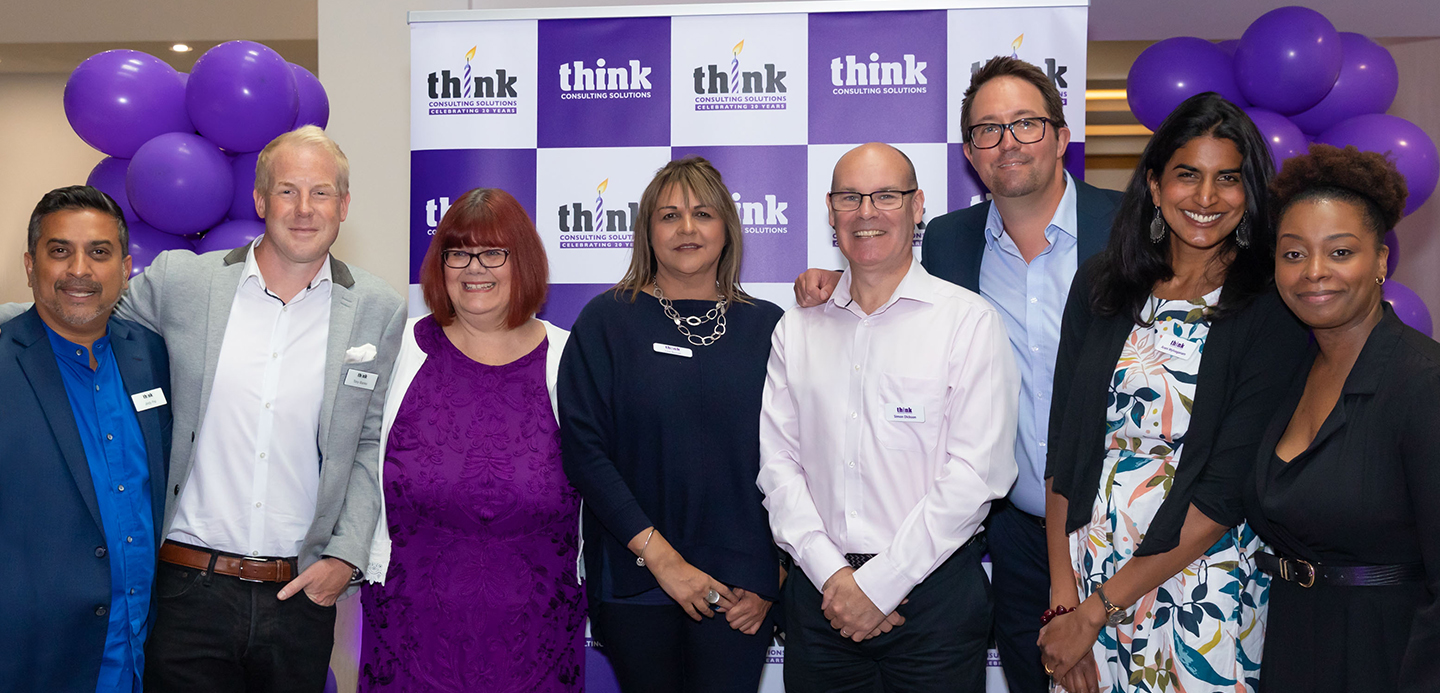
In December, the THINK team came together to make predictions for the fundraising and charity sector trends, challenges and opportunities we expect to see in 2022.
In response to the cost-of-living crisis
THINK’s Managing Director Michelle Chambers:
[swmsc_image src=”https://thinkcs.org/wp-content/uploads/2019/12/Mich-300×300.jpg” align=”right” link=”#” lightbox=”true” lightbox_type=”image” border_radius=”10px” alt=”” title=””]
‘Give – get’ fundraising techniques will proliferate; we’ll see transactional techniques such as raffles, prize draws, subscription products multiply in response to the economic squeeze. This is a sensible approach to take, however caution must be exercised in forecasting how many supporters recruited in this way will move into a more philanthropic relationship over time. The conversion to pure donating – either cash or regular gifts – will be low.
Income generation techniques will explore ways to access consumer discretionary spend beyond charitable giving: the economic squeeze will result in charities looking for other ways to generate income, through developing products which access other parts of discretionary spend – such as shopping online, affinity credit cards, etc. Whilst ROI and income margins are lower, these will offer an opportunity to fill the gap potentially left by traditional donations dropping.
Senior Consultant Amanda Warhaftig:
[swmsc_image src=”https://thinkcs.org/wp-content/uploads/2020/01/People-Amanda-300×300.jpg” align=”left” link=”#” lightbox=”true” lightbox_type=”image” border_radius=”10px” alt=”” title=””]
I think we’re going to see an increase in charities offering flexible giving options. Flexible giving – giving people the flexibility to change the amount they donate and when, depending on their circumstances, as easily as possible – will become increasingly essential as the cost-of-living crisis hits harder. Charities need to give donors flexible options to be able to give when best suits them, and to easily change the frequency and value of their donations, helping to maintain these relationships for the longer term and for when individual circumstances improve.
Philanthropy
THINK’s Director of Strategic Consultancy Simon Dickson:
[swmsc_image src=”https://thinkcs.org/wp-content/uploads/2020/01/People-Simon-300×300.jpg” align=”left” link=”#” lightbox=”true” lightbox_type=”image” border_radius=”10px” alt=”” title=””]
In very practical terms, the role of women in driving philanthropy is growing alongside the number of wealthy women. There are now 328 women billionaires – a rise of 36% year–on–year and the global wealth of women is estimated to reach US$81 trillion by 2023 according to Forbes. They are becoming an even more powerful force. Causes such as gender equity and minority rights will continue to be important, but the climate crisis is back on the agenda and I predict more and larger gifts to this causal area.
Michelle also added:
Funders will step up in response to the economic situation. As in the pandemic, we will see funders responding to key issues in the external environment and making new monies available to organisations addressing those issues. We’re already starting to see this happen and it will be a key theme in high–value giving in 2023.
THINK’s Research Manager, Arani Mylvaganam:
[swmsc_image src=”https://thinkcs.org/wp-content/uploads/2020/01/People-Arani-e1626342047408.jpg” align=”right” link=”#” lightbox=”true” lightbox_type=”image” border_radius=”10px” alt=”” title=””]
Building on 2022, I anticipate the interest in targeting high-net-worth individuals to continue. In-person events are very much back, and we will see a continuation of targeted prospect research to support building guest lists. Additionally, I think a spotlight is being shone on the capacity of SMEs to give (e.g., through the Work For Good platform), and many charities will start to focus more of their corporate prospect research efforts to engage smaller companies.
Corporate partnerships
THINK Associate Senior Consultant Michelle Sorrell:
[swmsc_image src=”https://thinkcs.org/wp-content/uploads/2020/01/People-Michelle-S-300×300.jpg” align=”right” link=”#” lightbox=”true” lightbox_type=”image” border_radius=”10px” alt=”” title=””]
Lots of charities are wanting to work in climate change and are trying to work out what their place in the conversation is. Companies are struggling with what their agenda is and how they’ll meet the demands of consumers in the fields of EDI and sustainability (for example, carbon credits). They’re looking to charities to help them do that, but many don’t know how to deliver it and risk “greenwashing”. Charities need to generate income and companies are under pressure to move the dial, but there’s a massive mismatch in values and lots of leaders are not up to the job of dealing with those issues. There’s a general shift from a focus on mental health to climate change, and everyone’s scrabbling for a voice in this area. Corporate partnerships need to demonstrate impact and find a way to do that, against the backdrop of added uncertainty about whether the government is going to change soon.
Simon also added:
Linked to the prediction around big gifts for environment and conservation is how it sits within a partnership model. In late 2021, the Walton Family donated $100m to African parks Foundation – a partnership – to protect hundreds of thousands of hectares of African national parks. The partnership involves family foundations, corporate givers, the Postcode Lottery, the EU and US government funding a range of expert delivery partners. They are working together to transform conservation and it is working. I predict more of these large scale, multi-partner and territory collaborations in 2023 and beyond to help tackle the global climate crisis.
Regular giving
THINK Senior Consultant Jindy Pal:
[swmsc_image src=”https://thinkcs.org/wp-content/uploads/2019/12/4-JP-300×300.jpg” align=”right” link=”#” lightbox=”true” lightbox_type=”image” border_radius=”10px” alt=”” title=””]
In 2023 I expect to see a re-focus on regular giving. During the pandemic, one-off gifts supported the short-term financial needs of organisations across all sectors. With a shift towards longer term strategies and plans, organisations will need to predict their ongoing, long-term income – and move away from the “We just need cash” approach to investment in regular–giving product development. While cash gifts are still hugely important, recurring gifts from these supporters are challenging. A focus on future sustainability, through predictable, regular, unrestricted income is the beating heart of many non-profits – so a shift to long-term income modelling, moving attrition rates through more effective stewardship, will be a big focus in 2023.
The critical role of data
Many charities are on a long – and sometimes painful – journey to improve their data, and this will continue in 2023. The quality and usability of data will become ever more critical, and smart, user-friendly interfaces will become a priority for charities of all sizes who need to see supporter data more quickly. Dashboards have never been quicker or easier to put together, and I predict many small and mid-size charities will be following their larger counterparts in prioritising data clean-ups and CRM upgrades in the next few years – Arani Mylvaganam
Digital fundraising
THINK’s Director of Transformation & Innovation Matt Smith:
[swmsc_image src=”https://thinkcs.org/wp-content/uploads/2019/12/matt-300×300.jpg” align=”left” link=”#” lightbox=”true” lightbox_type=”image” border_radius=”10px” alt=”” title=””]
For years now, artificial intelligence – or machine learning – has promised so much. On the whole, the charity sector has done little to capitalise on these developments, while other sectors have grasped the baton and moved ahead. The recent launch of ChatGPT (in November 2021), and the proposed partnership with Microsoft thought its Bing search engine, will prove to be transformative. It’s open-sourced in a way that makes AI so much easier and cheaper to use now.
However, there are questions around ethics and a very real possibility that it may affect how we work, making some existing tasks redundant, but it will also create new roles and efficiencies that will transform sectors. AI is already impacting how content creators are writing and is likely to be the big thing of 2023. Using Chat GPT could well be as big a thing as sending your first email or making your first Google search. And every time it’s used, it gets smarter and smarter. But, to use it well, we need to hone our ability to write a great brief.
Amanda also added:
Accepting donations through digital wallets and other payment methods like Apple Pay, PayPal and GooglePay are essential. Supporters expect a giving experience similar to the way they buy and shop online, and charities need to ensure that they’re providing this experience.
THINK’s Digital Projects Manager Becky Steeden:
[swmsc_image src=”https://thinkcs.org/wp-content/uploads/2019/12/Becky-copy-300×300.jpg” align=”left” link=”#” lightbox=”true” lightbox_type=”image” border_radius=”10px” alt=”” title=””]
For almost as long as native Facebook fundraising tools have existed in the UK (five years now), we’ve seen in-memory fundraisers consistently raise more income than other types of organic Facebook fundraiser – typically six times more. Charities were reporting a decline in birthday fundraisers before the pandemic hit but lockdowns saw off this decline as friends and relatives looked for ways to celebrate and give while unable to meet in person. But over the past year, this decline in birthday fundraisers has resumed, and charities are looking for what will take their place.
I think 2023 will be the year that in-memory Facebook fundraisers come into their own as charities look for ways to maximise this income, and proactively and strategically encourage this type of fundraising – properly embedding Facebook fundraisers into their in-memory fundraising plans and making best use of Facebook’s social graph.
From a paid Facebook fundraising perspective, I expect to see more charities looking to Facebook fundraising challenges as a pipeline to regular giving programmes and other types of more committed support. Until now, many have seen this model as a way to generate a one-off hit of cash without giving enough consideration to how they’ll nurture these new supporters and invest in their long-term value. For those who think beyond the immediate term of the challenge itself, proper thought and investment will transform the ROI of these events.
Retail
Face–to–face mystery shopping has also returned in 2022 – this is not surprising given the real-time, rich data that this type of information gathering provides. With the potential uptick we may see in charity retail in 2023, in light of the cost-of-living crisis, there will be real value in the sector investing in understanding and enhancing the customer experience via mystery shopping – Arani Mylvaganam
Hybrid working
Even hardened sceptics have accepted that hybrid working will be part of the post-pandemic future. The job now is to make sure that hybridisation works as well as it can for both employees and employers. Clarity of expectations will be crucial – things function best when everyone knows what is expected – in terms of who is needed when in the office, protocols for hybrid meetings, and how to maximise homeworking without risking burnout. In–person working must be focused on collaboration and relationship building; home days are logically when focused work should get done. It sounds straightforward but there is still a lot of work to do to get the balance right for both employees and employers – Amanda Warhaftig
Staff recruitment and retention
Charities will have to work even harder to recruit and retain staff across key fundraising roles as the cost-of-living crisis in the UK deepens. THINK is already hearing stories from charities who are losing staff to comparable roles in other sectors that offer better pay and benefits. Getting the balance right on hybrid working arrangements, thinking creatively about development and learning, and putting staff wellbeing high on the agenda will be essential – Amanda Warhaftig
Workplace diversity
THINK Associate Partner Consultant Lisa Russel:
[swmsc_image src=”https://thinkcs.org/wp-content/uploads/2020/01/People-Lisa-300×300.jpg” align=”right” link=”#” lightbox=”true” lightbox_type=”image” border_radius=”10px” alt=”” title=””]
Charities will continue to grapple with their diversity and inclusion strategies and plans. These will likely focus on visual indicators in the hope of some quick wins. However, organisations will need to focus their efforts on cultural change – getting the foundations right – to ensure that tangible outcomes can be achieved.
Charities will continue to demonstrate allyship but this will most commonly be through their social media and other marketing channels. Encouraging allyship through supporter networks is less likely in the immediate term and indeed, organisations may resist taking a stance on anything that could be controversial. Charities may become more confident in this once their EDI strategies are in place and fully adopted.
Political influence over membership charities
I hope this prediction doesn’t come to fruition, but my concern is that we may see more groups from the Tufton Street network and their ilk try to infiltrate and influence membership-based charities. The self-styled “grassroots” campaigning group Restore Trust (who deny any association with Tufton Street) made a bid to unseat the management of the National Trust in 2022 in its aim to “depoliticise” the charity. It takes exception to the charity participating in Pride events, among a number of activities it considers to be “woke” and otherwise political. Although the group failed to secure the votes it needed for the seven candidates it put up at the latest National Trust AGM, the Restore Trust website homepage is still calling for people to “Join the National Trust to vote for change in 2023”, which gives the distinct message that they don’t intend to back down any time soon. I think it’s a real possibility that we could see similar attempted interventions at other charities whose members hold voting rights on the organisation’s activities and approach – particularly those considered to be British institutions moving into more progressive areas of work or those that divide opinion – Becky Steeden
You can read our reflections of last year’s predictions and thoughts here: Reflections on our predictions for 2022. And in the meantime, we wish you a very happy New Year.
The THINK team
January 2023
_________________________________________________________________________________________
If you would like to discuss our THINKing further, please contact our central office on info@thinkcs.org.
You can also find us on LinkedIn at THINK Consulting Solutions and on twitter @ThinkCS, where we share useful industry insights.
Related posts
Did our 2025 predictions come true? Reflections from the THINK team
We revisit our January 2025 fundraising predictions and explore what actually happened: what…


What the 2025 community fundraising mystery shop reveals about the supporter experience
This year’s THINK mystery shop shows that when charities invest in meaningful engagement,…


How do charity services shape local fundraising?
In his first month as THINK’s new Director of Data, Steven White reflects…

Sign up to our email newsletter
We call it ‘Something to THINK About’ – a regular dose of sector insight, ideas and updates, straight to your inbox.
